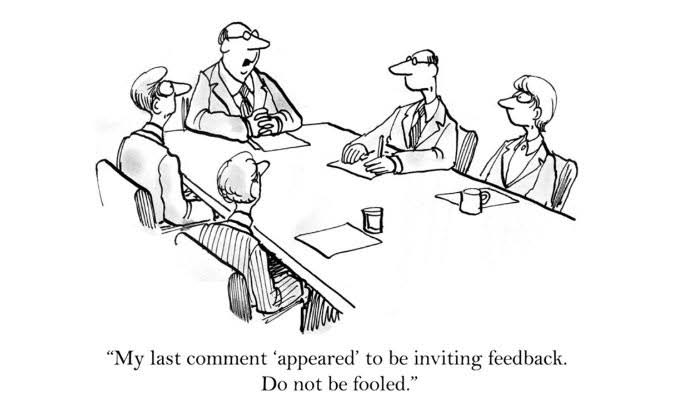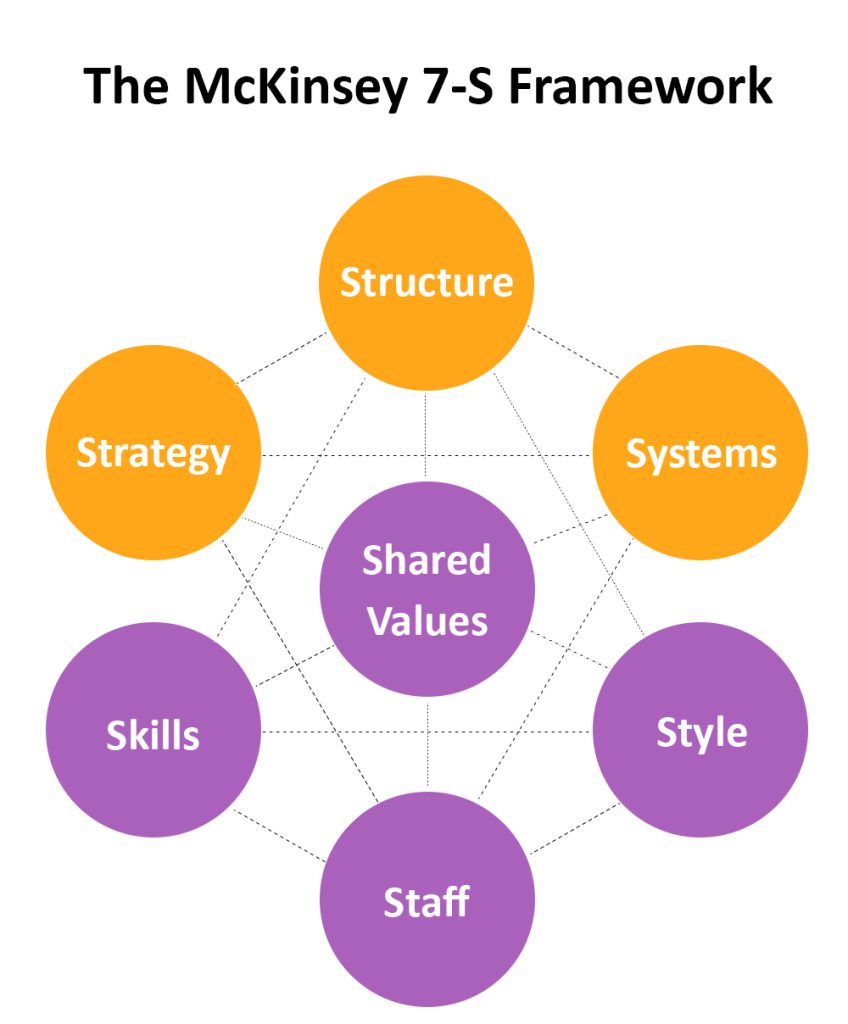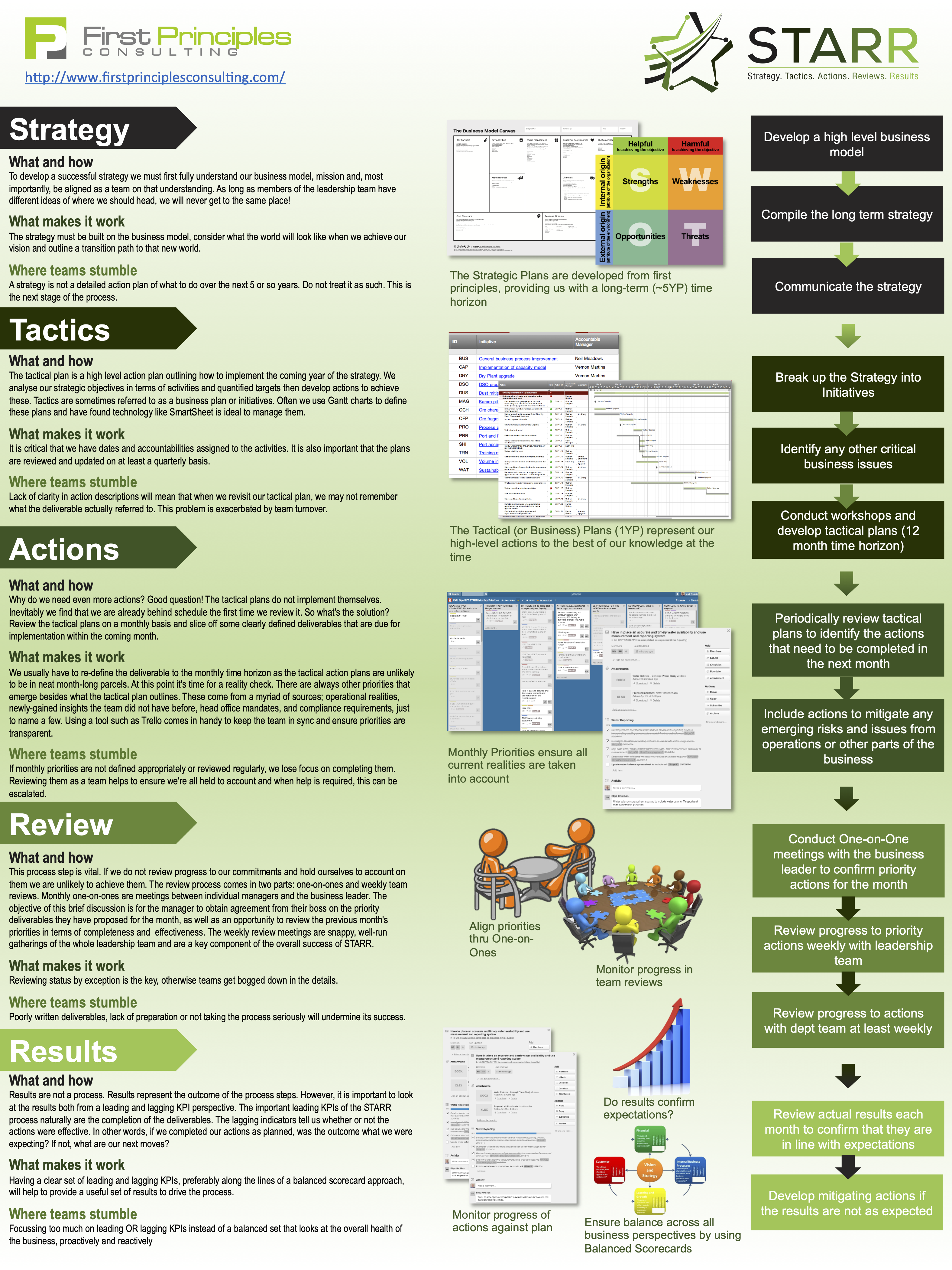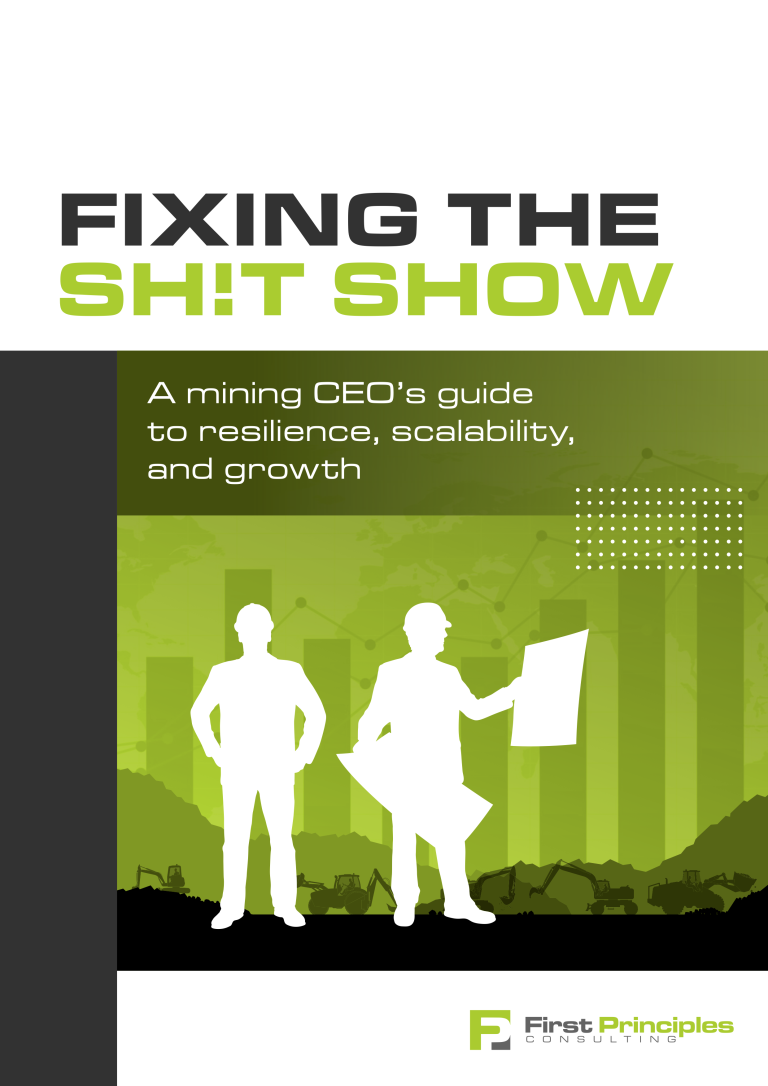Congratulations, you have made it!
No doubt you are driven, smart and probably battle-hardened to make it all the way to the top. You possess the attributes required to lead a company and you have earned the right to do so.
But being a CEO is a tough gig. We all know cases where good CEOs got tripped up by something coming from left field or maybe their own behaviours caused their demise.
I won’t list the obvious behaviours that can and should get anyone fired, not just a CEO. These would include lack of integrity, dishonesty, lying, etc., however, the multiplication effect of such behaviours at the CEO level is obvious.
Instead, let’s concentrate on the less obvious things. Let’s take a look…
1. Getting the strategy wrong; waiting too long to pivot or pivoting too frequently - STRATEGY
Corporate history is littered with well-intended CEOs who picked the wrong strategy. The consequences range from minor to career-ending to bringing down the company in the process. Famous examples that come to mind include Kodak, Blackberry and a specific one in mining would be BHP’s failed Rio Tinto takeover attempt in 2007/8. (I wonder if we might add some big name car makers to the list of companies headed in the dinosaur direction over the next decade or two.)
If developing and executing strategy was easy, CEOs would not be as highly rewarded for their work. You have to find the blend between bold and bland, while balancing on the tightrope of constantly changing external forces. An otherwise successful strategy can end up completely inappropriate before you’ve had the time to execute it.
At this point, it’s important not to be mentally dogmatic or complacent; corporate flexibility is called for, as is the ability to pivot or at least adjust, and articulate your modified strategy clearly. Inability to see the need for this and the capability to respond can be fatal to ones career.
The opposite kind of strategy-related mistake is CEOs changing it too soon or too frequently, never allowing it to run to its completion. I have seen many companies suffer from this and it causes something that looks like ADHD on an organisational level.
How to avoid it
- Continually monitor external forces
- Continually monitor the progress of the strategy’s execution using the approaches listed below
- If strategy implementation is on track but metrics aren’t heading in the right direction, put Business Intelligence in place to help you understand the disconnects
2. Letting the company become a hostile takeover target - SYSTEMS
This one is a no-brainer. If the company becomes the victim of a hostile takeover, the CEO — while often handsomely rewarded with a golden parachute — is usually out of a job.
How does this happen? Picking any one or multiple of the mistakes listed below is a good start. Other specific reasons we have seen over the years include not successfully executing the strategy or at least not achieving the strategic intent. Why?
- They weren’t using a proven methodology
- They hadn’t ensured their strategy is properly cascaded throughout the entire organisation
- They abdicated the execution of strategy rather than delegated it
- They payed insufficient attention to the mechanics of strategy execution
How to avoid it
How to avoid it
- Use a proven framework such as STARR or OKR
- Ensure the strategic plan is properly cascaded into tactical plans through out the entire organisation, including required resourcing, capabilities, reward, business structure etc.
- Execution of the strategy is very much the CEO’s business, not just its inception
- Pay attention to the mechanics of how the strategic plan will be implemented, including timely feedback to you at shorter intervals than are common in the mining industry
3. Failing to commit to Operational Excellence (Business / Continual Improvement — BI/CI) - SYSTEMS
It goes by many names but what I’m talking about is ensuring that continual improvement of your business processes — your capability to execute — is part of your overall strategy. Organically grown business processes are rarely fit for purpose. Unless people are specifically tasked with improving systems, they usually get worse, as everyone is genuinely too busy doing their day job. In other words, continually improving the way you do business must be part of some peoples’ day jobs!
What happens when BI/CI is not part of the strategy and left to chance?
- Failure to make the company fully effective, missing guidance too often and sometimes impacting safety
- Failure to execute required change
- Reduces the company’s agility to adapt to external changes (recent examples would include a pandemic)
- It wastes time and money and results in too many false starts; in particular, this applies to improvement and change efforts. The more failed change initiatives an organisation suffers, the harder the next ones will get, as trust in leadership diminishes
How to avoid it
- Link it to strategy, personal development and reward
- Commit adequate resources to it
- Provide access relevant training
- Make sure the BI/CI function is led by an experienced professional (mining experience is not as essential as is Change Management, Systems Thinking and BI/CI methodologies)
- Staff it with people earmarked for advancement; use it for development
- Engage external experts when needed, because they bring a capability you may not have yet (e.g. organisational change management); they can help you get there better, faster and cheaper (without false starts)
- Don’t treat the BI/CI function as a discretionary spend, a departure lounge or somewhere to ‘park’ people you don’t know what to do with, hoping they get bored and leave!
4. Continually changing your company structure (OrgChart) for the wrong reasons - STRUCTURE
Outside of mining, there is a large variety of organisation structures, and for good reason: the nature of their businesses is wide and varied.
Most mining companies, on the other hand, share the same or at least a similar business model. It’s pretty simple and the business model has not really changed much over time.
Yet, mining companies tend to frequently change their structures and OrgCharts. From centralised to decentralised and back again, especially after something goes wrong!
It’s visible and allows you to be seen to be taking action. Sometimes it’s justified, most of the times it’s shuffling deck chairs. The truth is that it usually is a sad attempt to be seen to be making changes after negative events (incidents or poor production) to hide the fact that nobody really knows how to improve the situation.
Should the service functions (like Technical Services, Engineering and Maintenance) be their own entities or should they be embedded within each process function (mining and processing)? This question misses the point.
The point is this: if you’re struggling to make guidance or are experiencing other symptoms of an organisation that is not performing, your OrgChart is rarely the cause. The real issue is that the company has not yet reached the organisational maturity required to be effective (Maturity Level 3 as defined in our free ebook). The root causes behind that will most likely involve any or some degree of all of the following: ineffective leadership, counterproductive culture, low Employee Engagement, discombobulated processes, etc.
The truth is, there is no single magic OrgChart solution for your company. Yes, there are some seriously inappropriate ones but let’s face it, each one comes with advantages and disadvantages. Hierarchy makes reporting lines clear and simple but is counterproductive to end-to-end business process, Theory of Constraints management and projects. It also fosters silo behaviours.
This is where the Matrix Organisation comes in as it solves some of the issues identified above; but wait… this one blurs the ‘command and control’ aspect and comes with its own set of challenges! Matrix structures require mature organisations.
The OrgChart design problem is compounded, because most people on site tend to work one or two levels below the ‘stratum’ that they are hired and remunerated for. This not only often leaves a leadership void in the upper strata, but it also means that the actual organisation is different to the one on paper.
How to avoid it
- A productive culture eats strategy for breakfast — and cuts across any suboptimal OrgChart, so stop continually changing it!
- Organisational Structure must be appropriate for its Organisational Maturity, e.g.:
- Functional: hierarchy, command and control is more suited to low organisational maturity (1-2)
- Matrix: matrix or hybrid matrix can work well when there is high organisational maturity (3-4)
- Focus on driving the maturity journey and evolve the OrgChart in line with it
- Ensure there is role clarity and people work at the level that you are paying them for (while this is easier said than done it’s entirely achievable)
- Lead your people authentically and cascade that style all the way to the front line; provide training, development, tools, systems, processes and career opportunities to ensure Employee Engagement is high
5. Taking insufficient time when starting as a new leader to understand the current organisation before making radical changes- STYLE
Why is there an expectation (at least in western culture) that as soon as a CEO takes over a new company there must be wholesale changes? Is this a case of confusing activity with achievement? Not only is it disrespectful to the company but, unless it’s in dire straights, more often than not results in the baby being thrown out with the bath water.
The number of times we have seen good systems, practices and behaviours thrown out by newcomers just to make a statement is ridiculous. Just stop it!
How to avoid it
- Stop throwing the baby out with the bath water!
- Take enough time when taking over the CEO role to get to know people, practices and reasons for it being the way it is.
6. Delusion: Believing ones own narrative despite evidence to the contrary (even from your own people) - STYLE

The further away from the frontlines that leaders get, the further they are removed from reality. The reality distortion field may have worked for Steve Jobs but he’s the exception, not the rule.
The closer to your rank your colleagues are the more they are inclined to tell you what they think you want to hear. And frankly, they are most likely living in the same bubble as you are.
This matters, because you need to know the truth.
How to avoid it
- Recognise the problem
- Provide psychological safety for people to speak truth to power. Ask less general and more specific questions, invite employees to be frank — especially the overly diplomatic ones
- This is not to be confused with a free for all, where there is no accountability. Instead, consequences of failure are acknowledged in a learning environment
- Devise the right metrics and KPIs to tell you if your intent is turning into the right outcomes and impacts
- Recognise that you cannot run the business purely by numbers — read the room
- Take time to frequently talk to your people doing the work that pays the company’s bills, ideally as an ‘undercover boss’
7. Not actively driving Employee Engagement - STYLE
I am aware that Employee Engagement has become yet another buzzword. It’s unfortunate. Paying lip service to how much your people are engaged in their work and committed to your company is critical. It’s a direct reflection on how much they feel valued.
Are your employees engaged, disengaged or even actively disengaged?
Most new hires start with all the best intent, experience a terrible onboarding process and their bad experiences only get worse from there on.
Disengaged employees are unproductive (there are plenty more statistics here, which I won’t list here in the interest of brevity).
How to avoid it
- Become familiar with the real drivers of Employee Engagement (purpose, development, organisational and role suitability, etc) — and work on them
- Measure it (not just lagging indicators like turnover but include leading indicators like suitability, individual and team engagement and relevant behavioural competencies) and take it seriously — it’s critical!
- Because most of team engagement is determined by the people’s direct bosses, make sure they are trained in the art of leading
- Employee Engagement must be owned by leaders, expected of managers and facilitated by HR partners
- Even better: start transitioning towards Employee Experience
8. Failing to balance accountability, loyalty, trust and psychological safety - STYLE
Why do I keep banging on about this? Because I have seen these concepts being confused too many times. And if the leader gets them confused, imagine how your people feel.
- Accountability is the acceptance of responsibility for one’s own actions. It implies a willingness to be transparent, allowing others to observe and evaluate one’s performance. In a business context, it must start with clear expectations and acceptance thereof. Too often, this is where the accountability process fails. Learn more about how to create a culture of accountability and how you can cascade it throughout your organisation here.
- Loyalty is a two-way street. “There is no loyalty anymore” might make for a good catch cry, but the sad fact is that leaders usually expect it from their people but are unwilling to return it — then wonder why their staff is not loyal to them.
- Trust is also a mutual affair. Remember, it must be earned, therefore what you say is of little consequence because all that matters are actions or deltas between promises and actions. Key components of trust are intent and integrity, competence and results, and self-interest. There are some great thinking models that define trust worth a look at (The Trust Equation – The Trusted Advisor, The Speed of Trust – Stephen M. Covey, and Performance vs Trust – Simon Sinek). Like George Box taught us, all models are wrong but some are useful.
- Psychological Safety is covered a bit above but here is a very nice quick reference. Psychological Safety does not mean a free for all!
Why it matters: these seemingly simple concepts are clearly not as simple as they seem, else leaders wouldn’t struggle so much trying to balance them. They might appear to be somewhat contradictory to each other, so balance is the key.
How to avoid it
- Take the time to understand the concepts
- Your people are happy to be held accountable — as long as you follow the process
- “Customers will never love a company until the employees love it first” — Simon Sinek
9. Surrounding yourself with people who won’t challenge you (insufficient diversity) - STAFF
There is much talk about diversity these days. Like most things in life, diversity can be a blessing or curse. Here’s why:
- Benefit: Diverse teams can provide multiple angles and therefore are more likely to solve old problems in new and novel ways.
- Challenge: Managing and working in diverse teams can be uncomfortable, because, by definition, team mates think differently and at times it may feel like herding cats
How to avoid it
- Recognise the problem
- Learn how to deal with diversity and provide your employees with access to this training
- Hire diverse people, but take into account how they’ll fit into your desired culture (there are screening tools to assist)
- See point 8 above
10. Not managing the company’s skills gap - SKILLS
Every organisation requires a set of competencies to translate the CEO’s vision and strategic intent into actionable tactical plans and execute them. In a mid-tier mining company, this is not a trivial challenge. The way to manage this is with a Competency Framework. It is important that this includes clarity of the company’s core values (which apply equally to everyone), core and functional competencies (these are segmented into whom they apply to).
Some of the benefits a Competency Framework provides includes:
- Sets clear expectations of your staff members and guides them in line with your company’s mission, strategic direction, culture and goals
- Enhances consistency in human resources planning, recruitment, learning and development, and performance management, and ultimately, delivery of strategy
- Provides visibility of the organisation’s skills gap – now you have a valuable metric to measure and monitor. This can be used as a risk metric, in other words, if the skills gap becomes too large, bad things may happen.
How to avoid it
- Ensure there is a well-designed Competency Framework in use, it’s owned and it’s effectively managed
- Monitor the Skills Gap as a KPI; intervene if you need to
11. Organisational Dynamics: ignoring the power bases - SHARED VALUES
As the CEO, you may outrank almost everyone in your company, but you still need to be aware that the power you wield in your position is not the only type of power there is. The other bases (coercive, reward, legitimate, referent, expert, and informational) have the ability to trip you up.
What are the real power structures of your company? Who are the true power brokers? Where is their power coming from?
I am not encouraging you to play politics, nor is this a crash course in French and Raven’s ‘The Bases of Power‘, but a reminder that you ignore these forces at your peril.
How to avoid it
- Be aware of who holds power, why and how
- Don’t play power politics
- Be aware of the power you wield and use it wisely; put your political capital behind change and improvement efforts you truly believe in
12. Thinking organisational Values only belong on the company website - SHARED VALUES
If you’ve read this far, you’ll have noticed that we value authentic core values, aligned to the company mission. They play an important role in shaping your company’s culture, promote team cohesion, and provide a sense of purpose (beyond just making money).
Just about every mining company these days display their core values somewhere prominently on their website — which is great! Except that, when we ask people what they are, they usually can’t remember them. But worse than that, clearly, they are not being ‘lived’, they are not observable. Worse than that, too often the primary behaviours displayed are the exact opposite to the core values advertised on the website.
Why is this the norm more often than not? My observation is that because mining is a heavy industry, your company invests fortunes in tangible assets such as mining equipment and capital development. Things like company values can feel a bit namby-pamby to engineers, who are more used to dealing with hard numbers.
Here are some numbers. According to research by Gallup:
- Among U.S. employees, only four in 10 strongly agree with the statement, “The mission or purpose of my company makes me feel my job is important.”
- Why does this matter? By moving this ratio to eight in 10 employees, organisations could realise
- 41% lower absenteeism,
- 50% fewer safety incidents and
- 33% improvement in quality.
If you care enough to actually develop a set of core values (tick – well done), you should care enough to actually implement and measure their effectiveness. I understand, this is far more tricky than it sounds. But it starts at the top. As a leader, this one is in your control. If you role model the core values
How to avoid it
- Develop your core company values collaboratively and ensure that they actually do drive the performance and results your strategy demands. Is your culture consistent across your business units?
- Set the tone at the top — turn values into culture by leading by example; it’s the only way to gain trust
- Cascade values and culture throughout the company and measure them
- Allow everyone to hold anyone accountable by pointing out stated vs demonstrated values
The Baker’s Dozen: Failing to deal with AI
(Not so) breaking news: AI is coming for your company and failing to deal with it could set you up for disaster.
Tool or weapon? Most new technology is developed to provide us with benefits. This one promises to have it in buckets — but what about the risks? We already know about some of the unintended consequences.
Opportunities:
- Optimise mine planning (sequence and scenarios) and execution (dispatch systems)
- Help engineers write better plans, actions, reports, etc (we’ve seen some exciting examples of this already!)
- Help HR with some of their tasks… oh wait — is it safe?
Risks:
- Accuracy — When AI gets it wrong, it doesn’t just miss by a little bit
- Privacy concerns — especially in HR
It’s early days, but already too late to ignore.
How to avoid it
- Educate yourself about the power of AI and its associated risks
- Formulate an AI policy and roll it out
- Decide how AI might be useful or dangerous in your strategy
- Everything AI-related must remain a living document, a work in progress, continually revisited in the light of new developments
Conclusion
When I first wanted to write this blog, I thought I’d struggle to list 12 critical, career ending things. As a CEO you have to be across so many things, it’s no big surprise I could have listed even more. After I boiled them down to 12, I recalled McKinsey’s 7S framework and, given it dates back to the 1980s, it still sums up a CEO’s focus areas pretty well. You will find that each one of the critical mistakes listed above can find a home in the 7S framework. Also notice, how all the 7 S’s are all connected? This pretty much applies to this list as well.








